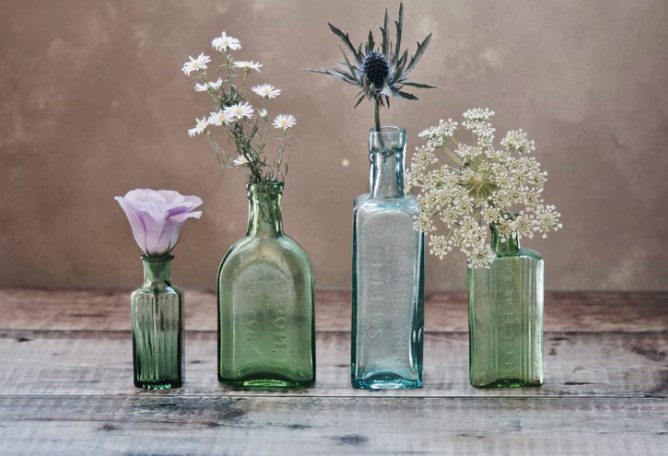Donna Audia, RN, an integrative care nurse at University of Maryland Medical Center in Baltimore, was called to the bedside of a woman who was at the end of her life and had severe nausea. The woman had tried anti-nausea medications, but they weren’t enough. The health care team called Audia to see if she had a complementary or alternative therapy that might help.
“We used pressure points, reiki, music, sound, and then as a last-ditch effort — because nothing was working — I asked her if she’d like to try aromatherapy,” Audia recalls.
The woman hadn’t heard of aromatherapy, but she was willing to try anything. Audia put a few drops of a blend of essential oils on a 2-inch-by-2-inch gauze pad and closed it inside a lidded specimen cup. She told her to uncap the cup, inhale the fragrance, then recap it and repeat as needed.
“Her husband told me that she continued to use it until she died,” Audia says. “I was amazed.”
A growing number of hospitals and clinics offer aromatherapy along with traditional medicine. While formal research into the benefits of aromatherapy poses many challenges, some evidence does suggest that the alternative treatment may ease nausea, anxiety, various types of pain, and other conditions.
Aromatherapy is believed to date back more than 3,500 years to ancient Egypt. The practices use fragrant essential oils, which are pure plant extracts, to remedy numerous ailments. Different oils are recommended for different symptoms.
“If they’re very anxious and just can’t relax, we would give them lavender. If it’s nausea, it would be ginger or spearmint,” says Nancy Rodgers, a certified aromatherapist at the Mayo Clinic in Rochester, MN.
In modern Western health care facilities, aromatherapy is often used in addition to conventional medications, such as anti-nausea drugs and anxiety or pain medications. That’s why it’s called a “complementary” therapy.
You can inhale the fragrance of the essential oil or put a diluted solution on your skin using a compress, spray, bath, or massage. At Mayo, patients get a few drops of the prescribed essential oil on a cotton ball sealed in a zip-top bag. “They just waft it under their nose for about 3 to 5 minutes, then put it away and try it again in about a half-hour,” says Rodgers. “Otherwise they become desensitized to the scent and think it’s not working.”
Practitioners at the University of Maryland Medical Center, in addition to offering oils to inhale on a gauze pad, may apply the oils to the skin as well. “We dilute the essential oils in a carrier oil [such as almond oil or avocado oil that does not have a strong scent of its own] for safety,” says Audia. Pure, undiluted essential oils can irritate the skin.
Some treatments suggest eating essential oils, but health professionals discourage this in the U.S., as essential oils are not regulated under food safety standards. “Essential oils are absolutely not safe to drink,” says Audia. Over the past 5 years, poison control centers have received 83,338 calls about exposure to essential oils, including calls about people who drank the oil, applied too much to their skin, or got it in their eyes. The most common calls by far are about swallowing the oils. Of those exposures, 1,162 resulted in moderate to major effects, such as high fever, disorientation, seizures, or cardiac arrest. Four people died from essential oil exposure.
“We don’t promote ingestion,” says Susanne Cutshall, DNP, a clinical nurse specialist for integrative medicine and health at the Mayo Clinic in Rochester. “We just don’t have good research data to support the safety of that.”
Compared with research on prescription drugs, medical devices, and surgeries, research on aromatherapy — and all complementary and alternative medicine, for that matter — is limited. Studies of aromatherapy in particular pose unique challenges. Plant extracts vary based on where and how the plant is grown and how the oil is processed, packaged, and stored. So it’s difficult to standardize oils for research to ensure that everyone in the study is getting the exact same experience. And, in the end, even with a standardized oil, it’s hard to prove whether it was the aroma itself that caused any changes in the study participants.
But some research shows benefits of the ancient practice.
In an analysis of 12 studies, aromatherapy helped relieve pain. The people who got the most relief from it had acute or temporary pain, for example from an injury; menstrual pain; labor or post-delivery pain; or post-surgery pain. Aromatherapy was less helpful for people with long-term, or chronic, pain. The treatment has also eased anxiety in studies of various patient groups, including burn patients; women awaiting breast biopsy; and patients having dialysis. Some research shows it can lessen post-surgery nausea, too.
Experimenting with essential oils on your own at home may not bring the same effects that you could get from a controlled health care setting with a trained professional.
“The difference between clinical and direct-to-consumer use is huge,” says Rodgers. “We know exactly what we are giving our patients and what’s safe. Out in the public, that’s going to be a little looser.”
If you want to buy essential oils for personal use, be an informed consumer. A genuine, unadulterated essential oil comes in a dark bottle. The label should include the following:
- The plant’s Latin name, such as Lavandula angustifolia for lavender
- The part of the plant that was used
- How the oil was extracted; for example, distilled or pressed
- The country where the plant was grown
- A purity statement that it is 100% pure essential oil
- A quality seal, such as GRAS-certified (generally recognized as safe) or USP (U.S. Pharmacopeia).
And trust your nose, says Rodgers, “If it’s supposed to smell like lavender and it doesn’t, then it’s probably not.”
Before you try aromatherapy, “be an informed consumer,” she says. Understand that the best way to inhale or apply essential oils depends on what you want to achieve.
You can inhale the aroma of essential oils via
- Steam
- Diffuser
- A cotton ball
- Spray
You simultaneously inhale and absorb aroma into your skin via
- Bath
- Massage
- Compress
Original article: https://www.webmd.com/pain-management/news/20181213/aromatherapy-can-you-smell-relief




























Comments